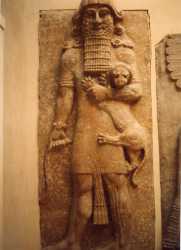>>15252408I use it for various things. There are differnt kinds and strategies. For remembering the arguments in favor of Teeline, I imagine a sequence of things, in a certain position. So the center item is the start, then north and around like places like a clock. I begin with a purse that has the word Teeline on it in Teeline, the purse means parsimony. Then I continue, the next place has twins ready for school - dual didact. I add interaction as I go, to use Bruno's "chain" tactic.
The result is a small mind palace. Now I can place things here, say a grocery list. But I could stack other things.
I do something similar for other losts I want to remember. Bruno recommended we also use these to remember basically strategies for thinking eg lists of questions or aspects. And you can also keep track of things as you are brainstorming, no paper required.
I also am learning Ancient Greek tables.
The most important rules are:
Vivid colors, and keep things in about a um... like a pho held in the hand or a bit bigger when viewing in mind's eye
Clear dramatic purposes to the "story"
Mix extremes, use yucky, lovely etc, shocking, scary
ALWAYS have a sentient person or animal at least every few places, don't go far without a person involved, and not a boring no-name person.
ALWAYS involve violent or slapstick over the top action, over and over. Joe slaps the refrigerator, or shoves it over, or humps it, or paints it a bright color
ALWAYS put EVERYTHING somewhere, in an imaginary place, doesn't have to be a real place.
Bruno's genius was generative places, so basically a place is defined by the things in the place, so if you have 100 identical apartments so what, way different stuff is inside each one, can't get confused. But at each location involve the item of the place, tie it in. Joe doesn't only sit on the couch, he pees on it (even if peeing on the couch, and joe, don't signify anything, just the silverware nosering he's wearing means anything to you

